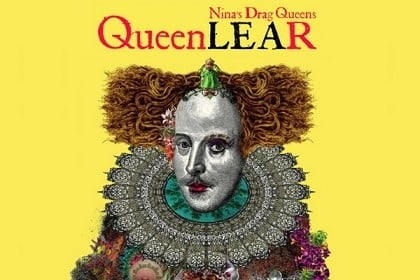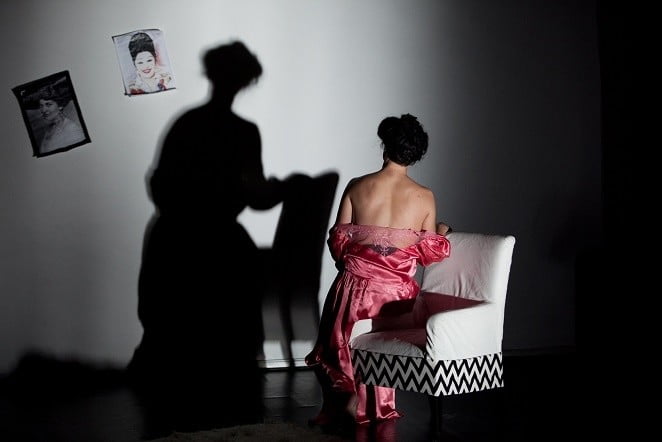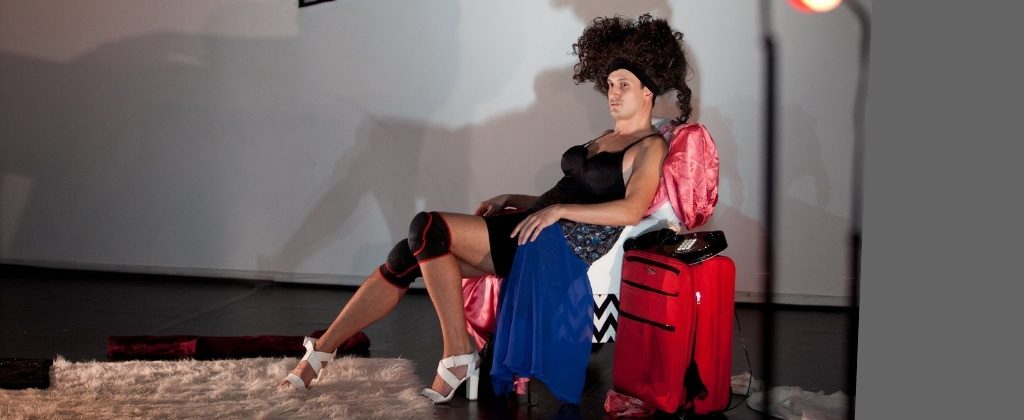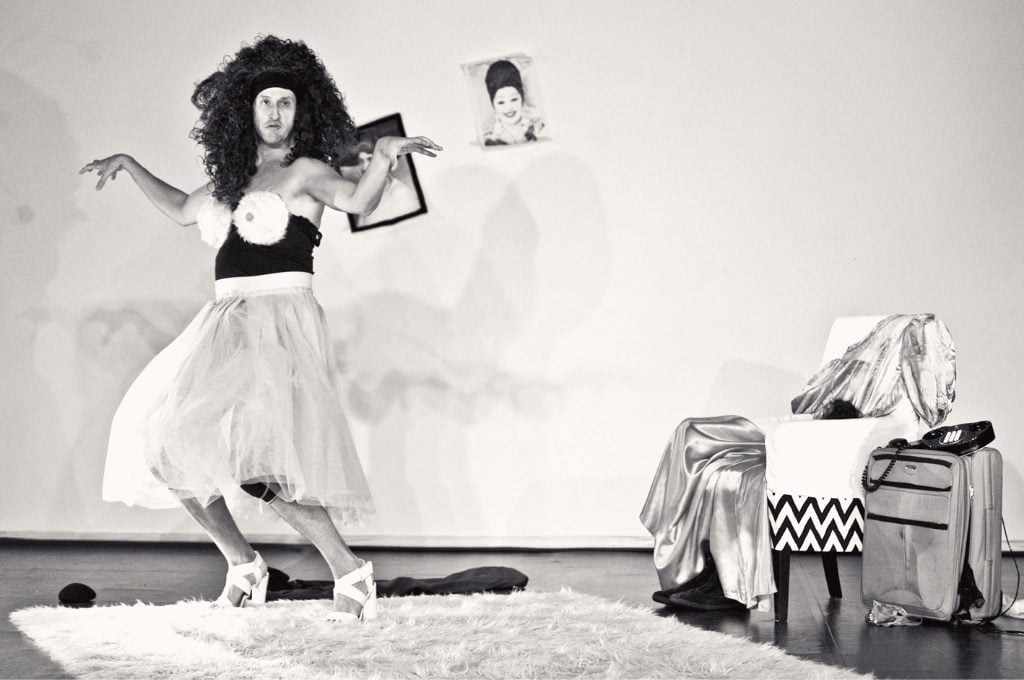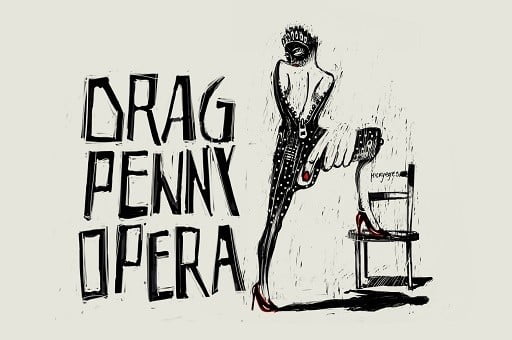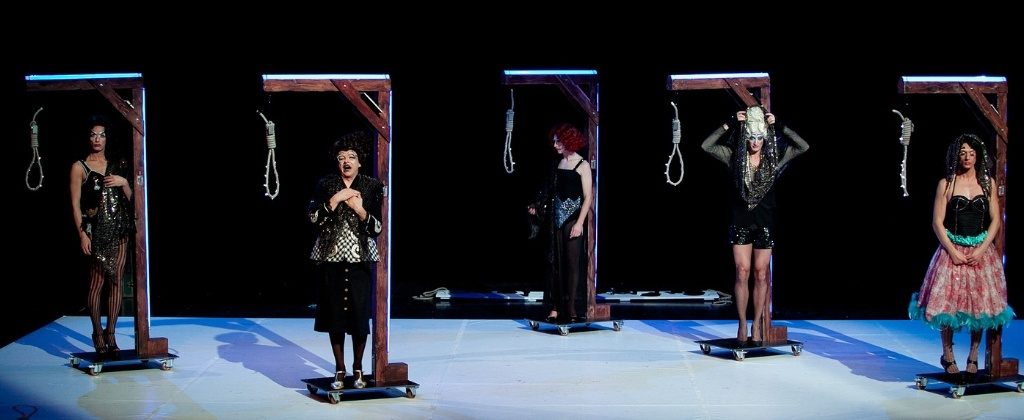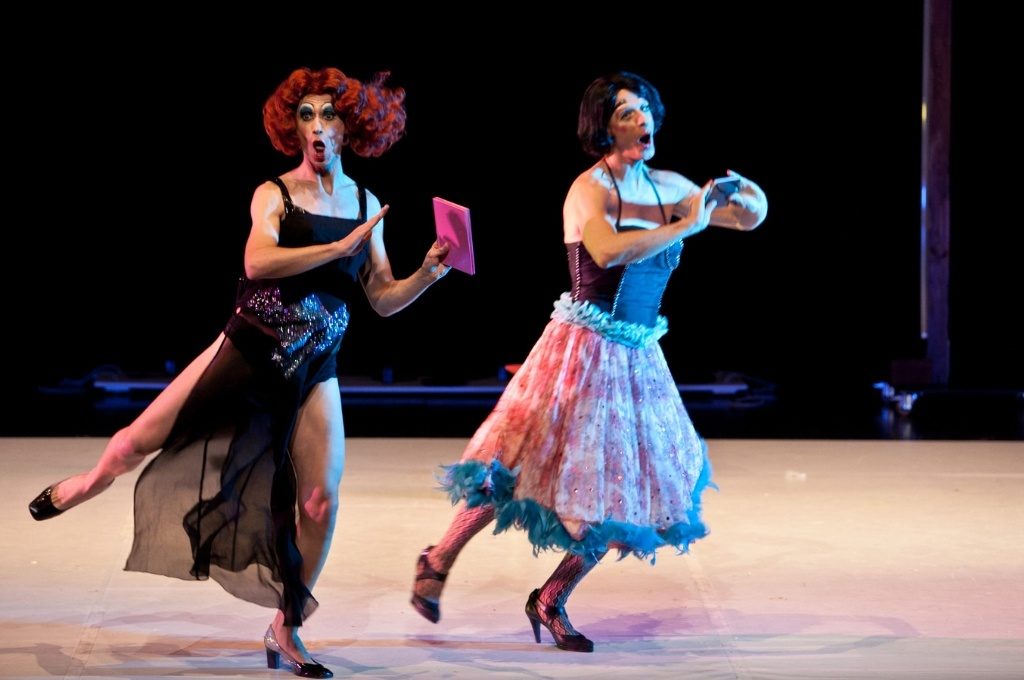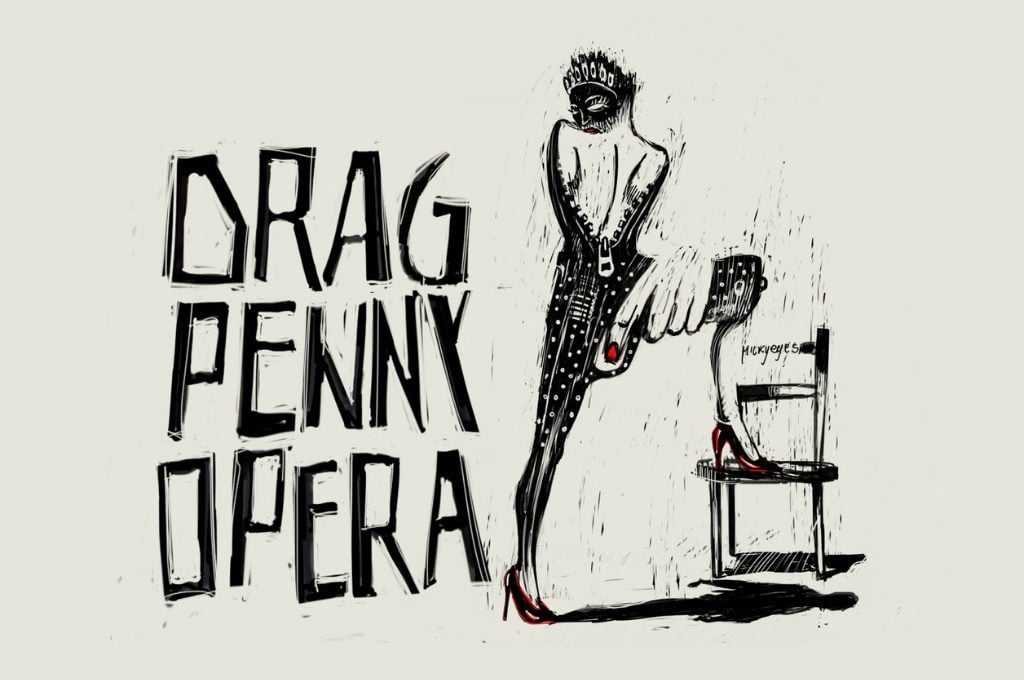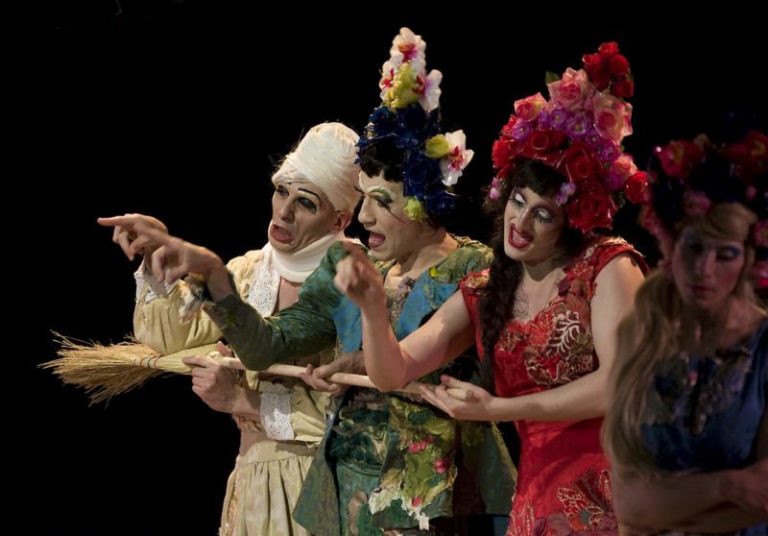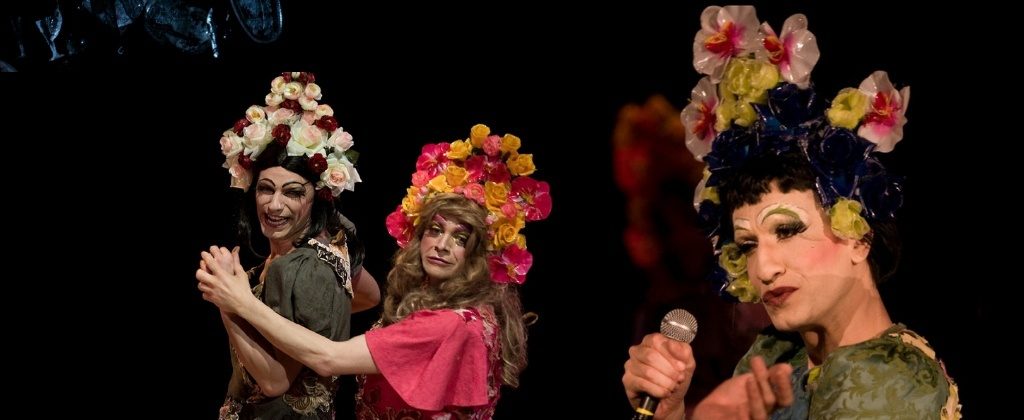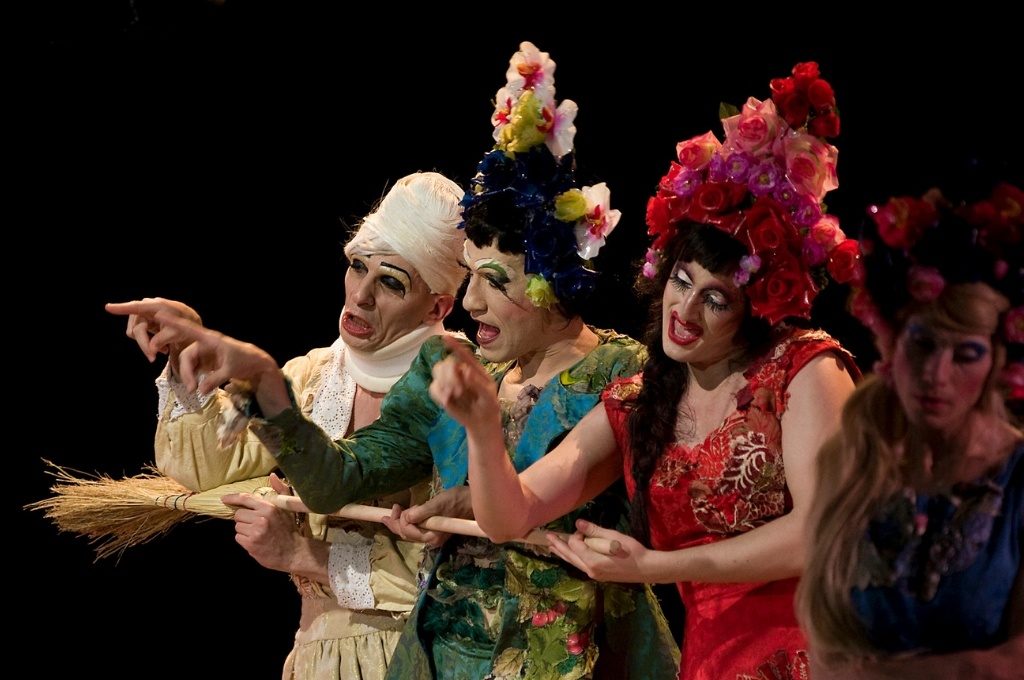“Know that tis my fast intent
To shake all cares and business from my age;
Conferring them on younger strengths.
Tell me, my daughters, which of you shall we say doth
Love me most?"
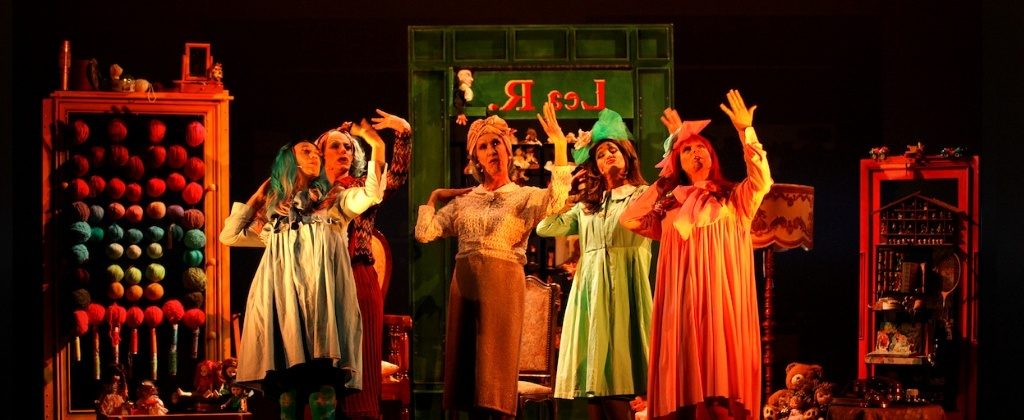
Inspired by Shakespeare's King Lear and turned into a musical tragicomedy en travesti, Queen LeaR is both popular and high - as required by the Elizabethan tradition.
The show was written by Claire Dowie, set to music by Enrico Melozzi, directed and performed by five drag queens - perfect contemporary declination of the Shakespearean fool.
Queen LeaR is our latest production and has both an English and an Italian version. The latter made its debut in January 2019 in Teatro Carcano in Milan, while the English version still has to be performed.
The Shakespearean themes are now associated to a contemporary, stark atmosphere, where castles become studio apartments, the moors are retirement homes, and the madness turns into senile dementia. In this harsh world the old “queen” has no place to go but an old people’s home and here her epic visions – knights, wars, and medieval kingdoms – come to life.
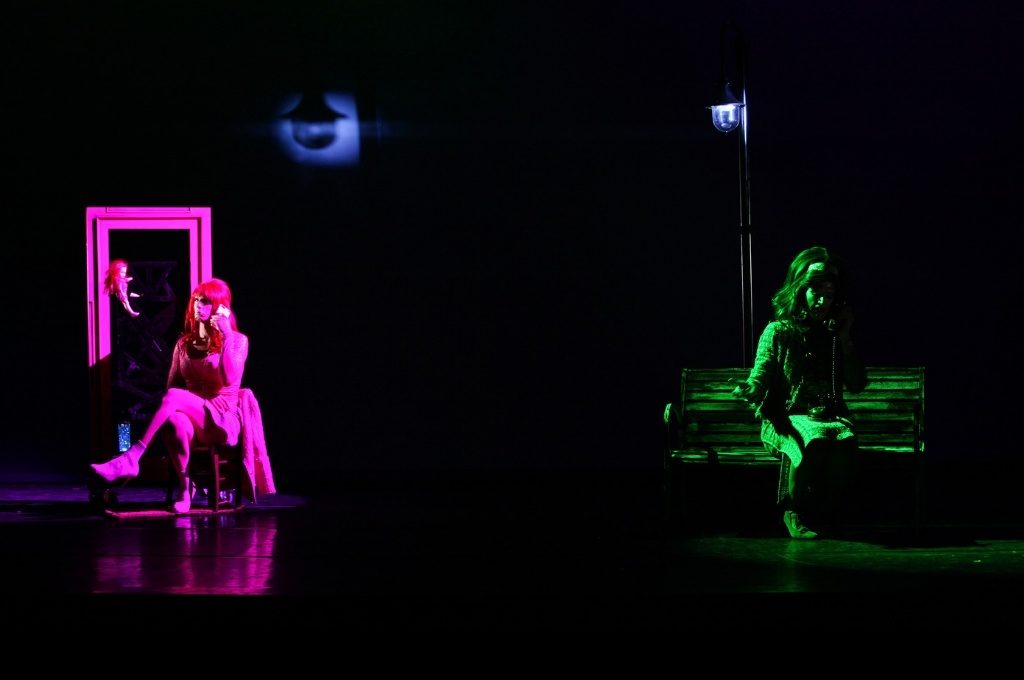
Queen LeaR deals with uncomfortable issues of our time, such as old age, social integration, illness and death, with our style: overlapping genres, pop music quotes and ironic, over-the-top – but not for this less authentic – characters.
a Nina’s Drag Queens‘ show
by Claire Dowie after William Shakespeare
original music by Enrico Melozzi
concept Francesco Micheli
performed and directed by Alessio Calciolari, Gianluca Di Lauro,
Sax Nicosia, Lorenzo Piccolo, Ulisse Romanò
set design Erika Natati
costumes Rosa Mariotti
ligth design Andrea Violato
wigs Marco’s Wigs
assistant director Camilla Brison
assistant for the scenes Giulia Bruschi
costume assistant Leonardo Locchi
musical recordings Orchestra Notturna Clandestina
italian translation Michele Panella and Lorenzo Piccolo
sound Alessandro Baldo
technician Luna Mariotti
vocal coach Elena Arcuri by IngressoArtisti
artwork Francesco Calcagnini
photographer Valentina Bianchi
production APARTE SOC. COOP. / TEATRO CARCANO / TEATRO METASTASIO DI PRATO
music production CASA MUSICALE SONZOGNO
supported by Fondazione Cariplo, Manifattura K, Kone Foundation (FI), Kilowatt Festival, Sorellanza
thanks to Accademia di Belle arti di Brera, Gianluca Agazzi, Chiara Bartali, Andrea Colombo, Naomi Galbiati, Francesca Sgariboldi, Donatella Mondani, Piccolo Teatro di Milano, Ingresso Artisti, Federico Salerno, Beatrice Palumbo, Leonardo Caruso, Serena Aldrighetti, Fulvio Santarpia, Orlando Manfredi, Salvatore Fiorini, Lorenzo Marquez, Giampiero Caponi, Emiliano D’Urbano, Carla Mulas Gonzales, Valentina del Re, Agnese Sielli, Elisa Agosto, Lodovico Bertuzzi. Viole Chiara Ciancone, Matilde Orsetti, Ambra Michelangeli, Leila Shirvani, Elisa Pennica, Giovanni D’Eramo, Dario Epifani, Joao Tavares Filho, Francesca Raponi, Ludovico D’Ignazio, Giustina Marta, Oriana Santini, Bego Garcia, Valerio Marcangeli, Daniele Moriconi, Giuseppe Rosa, Olena Kurkina, Fabrizio Candidi
Nina’s group’s actors-performers-singers-dancers are precise in every detail, able to enter and leave the characters and the century to make us accomplices.
Maurizio Porro, Cultweek
Savory, brilliant, pantagruelic theater binge.
Paolantonio Paganini, Spettacoliere
Everything is told in a style able to speak a language closer to the young audience, demonstrating that theater is not dusty even when it takes root into a distant past.
Valeria Prina, Spettacolinews
Nina’s Drag Queens’ poetics, made of spontaneous perceptions and expressions, is so powerful as to awaken in us again a sense of wonder and amazement. In short, they give us a bath of childhood.
Raffaella Roversi, 2righe.it
A high level performance for all the actors, perfect and virtuous in a complex and varied mechanism of movements and expressions. (…) A show absolutely not to be missed, different, true, intense, that makes you smile, laugh, move and that brings a universal message that in these times too often taken for granted: love, as long as you are on time.
Vittoria Colli, Cosmopeople
Everything is even more credible, even more true, even more natural, thanks to an interpretation that goes beyond exaggerated hairstyles, vertiginous heels and “divine” clothes. The actors makes the characters vivid and give the public a glimpse of everyday life, with the echo and the scent of an ever-present Shakespeare.
Salvatore Bruno, Intoscana.it
Therefore Queen Lear touches our deepest chords which, for better or for worse, make us simply and inevitably human.
Michele D’Ambrosio and Leonardo Favilli, Gufetto.press
watch the video
go to the calendar
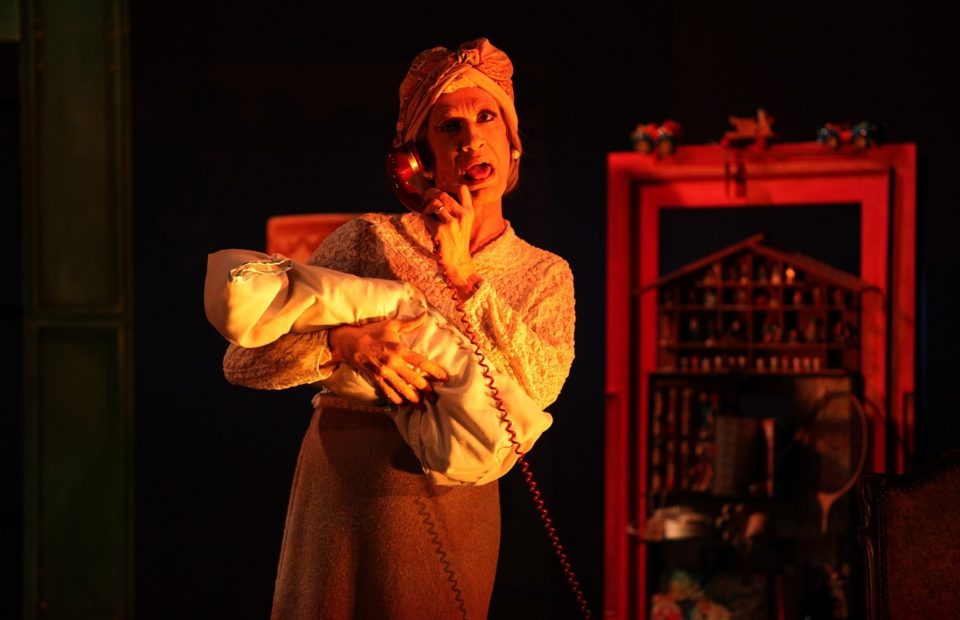 nina's drag queens queen lear
nina's drag queens queen lear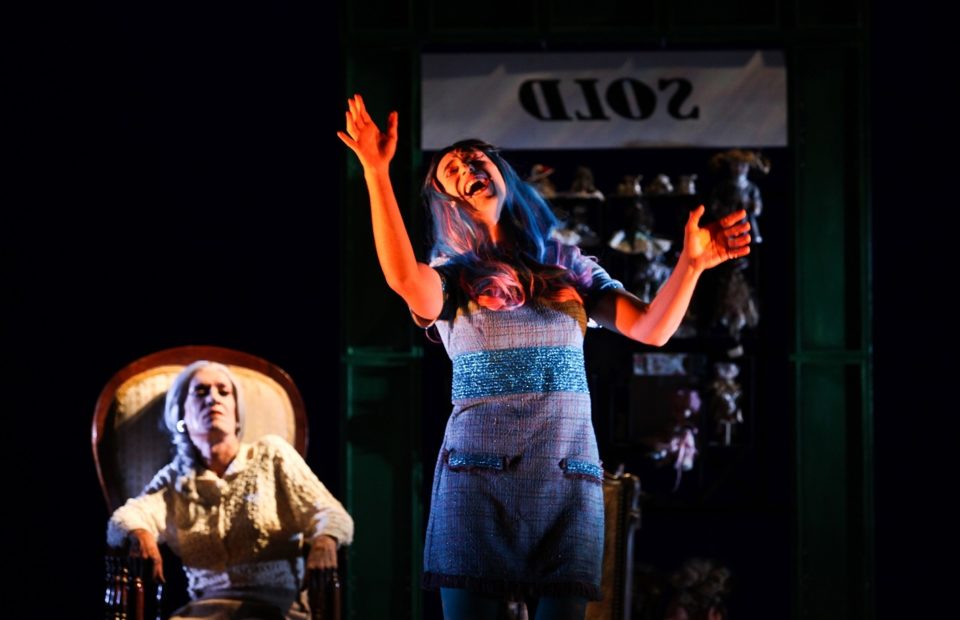 nina's drag queens queen lear
nina's drag queens queen lear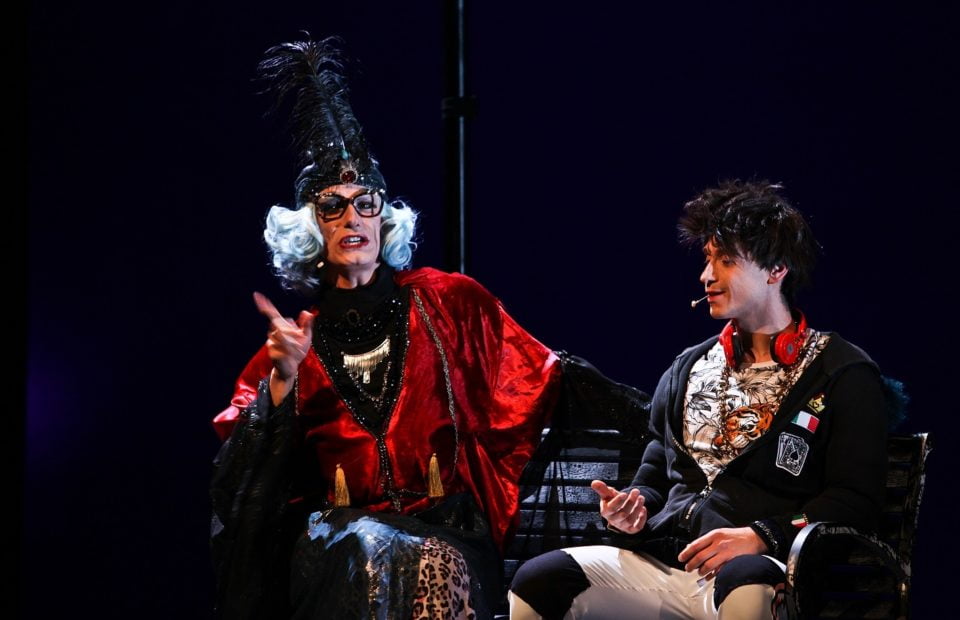 nina's drag queens queen lear
nina's drag queens queen lear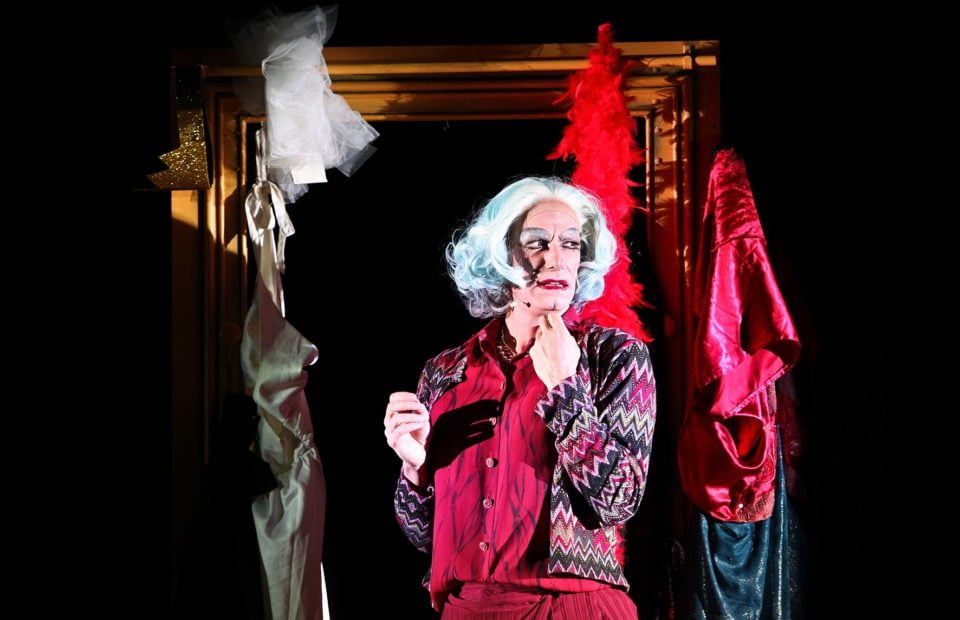 queen lear nina's drag queens
queen lear nina's drag queens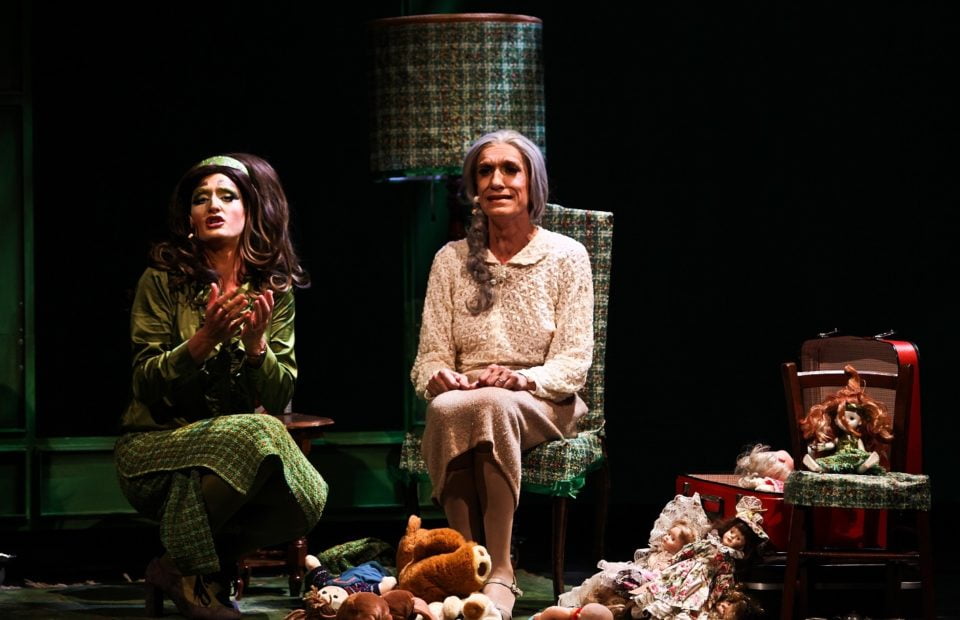 nina's drag queens queen lear
nina's drag queens queen lear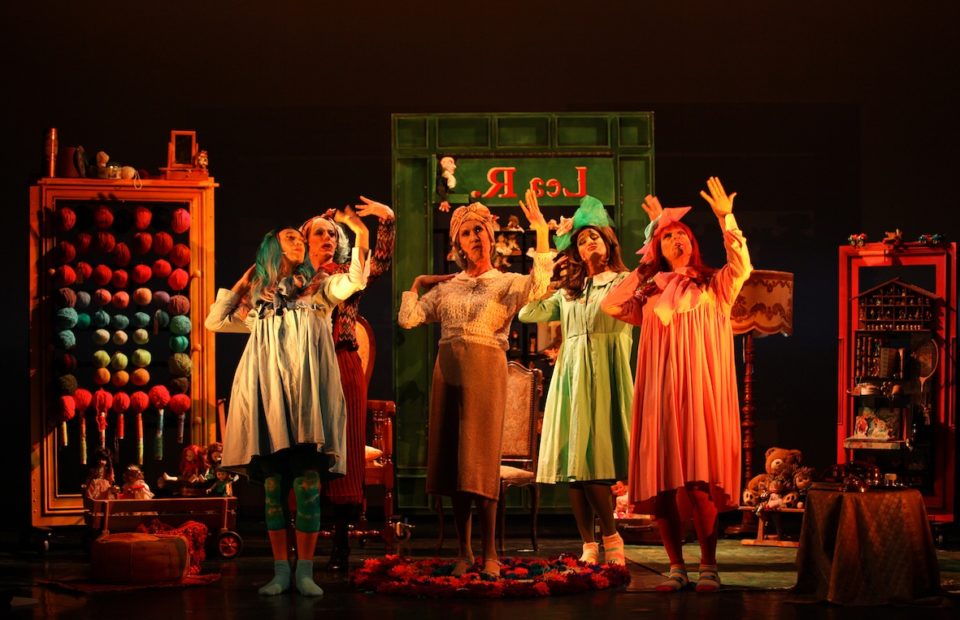 Nina's Drag Queens Queen LeaR
Nina's Drag Queens Queen LeaR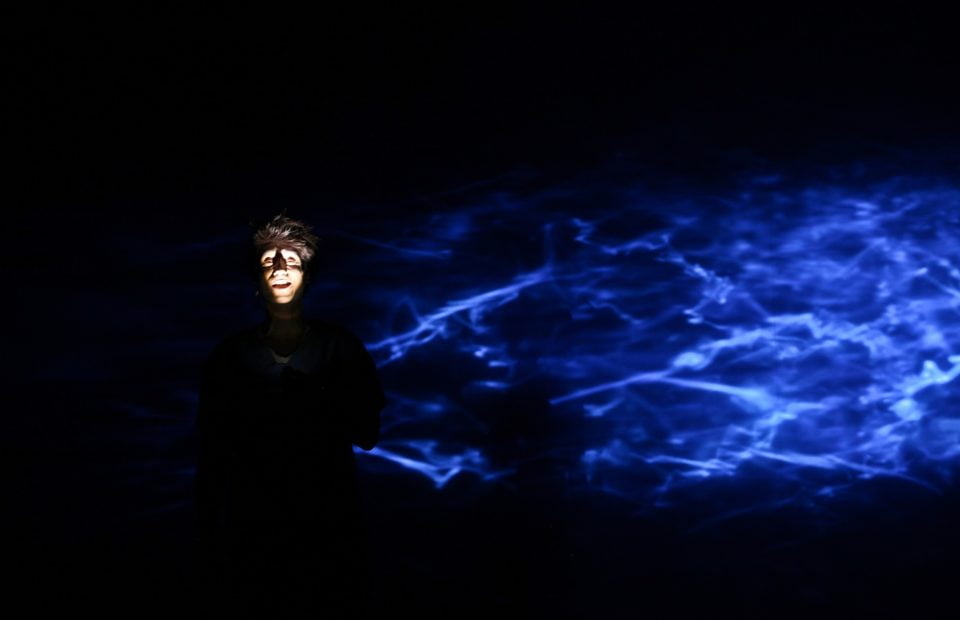 nina's drag queens queen lear
nina's drag queens queen lear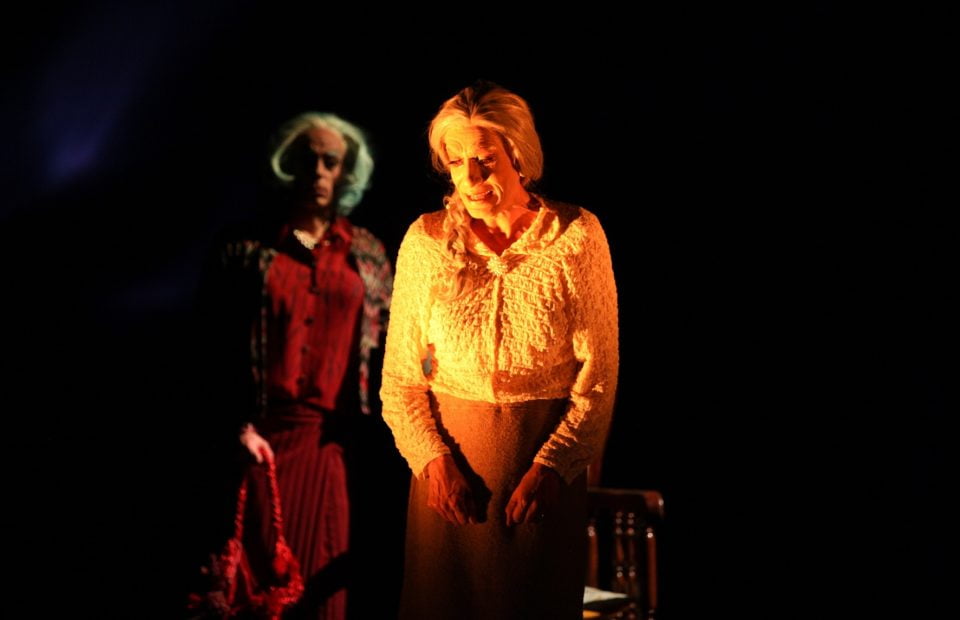 queen lear nina's drag queens
queen lear nina's drag queens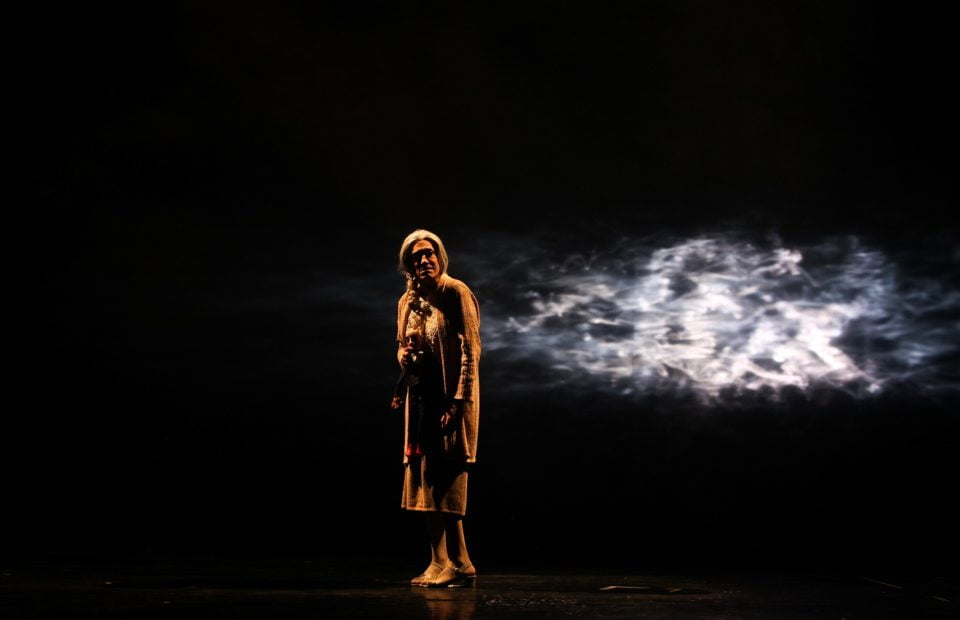 nina's drag queens queen lear
nina's drag queens queen lear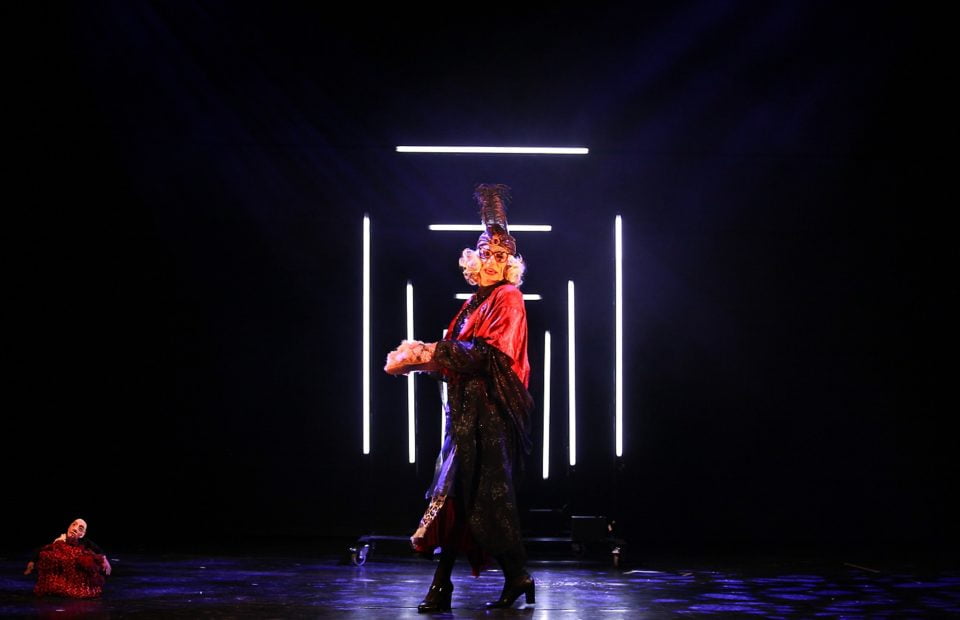 nina's drag queens queen lear
nina's drag queens queen lear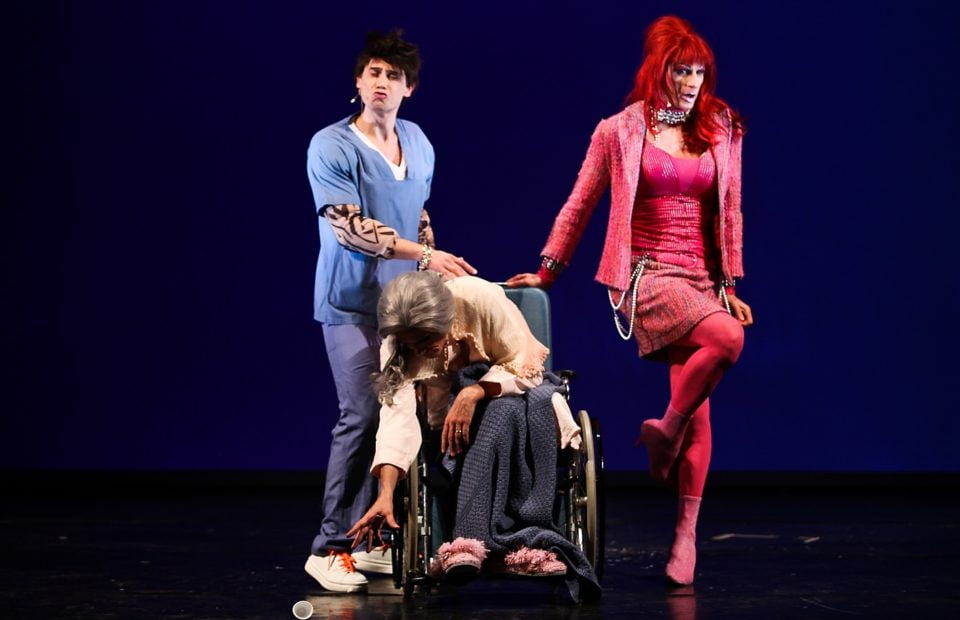 nina's drag queens queen lear
nina's drag queens queen lear nina's drag queens queen lear
nina's drag queens queen lear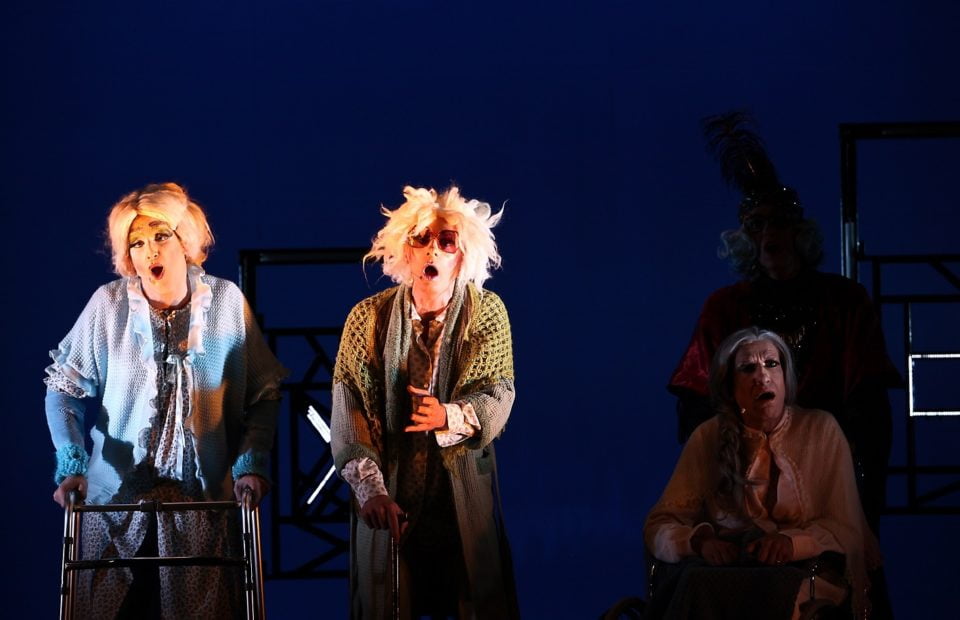 nina's drag queens queen lear
nina's drag queens queen lear nina's drag queens queen lear
nina's drag queens queen lear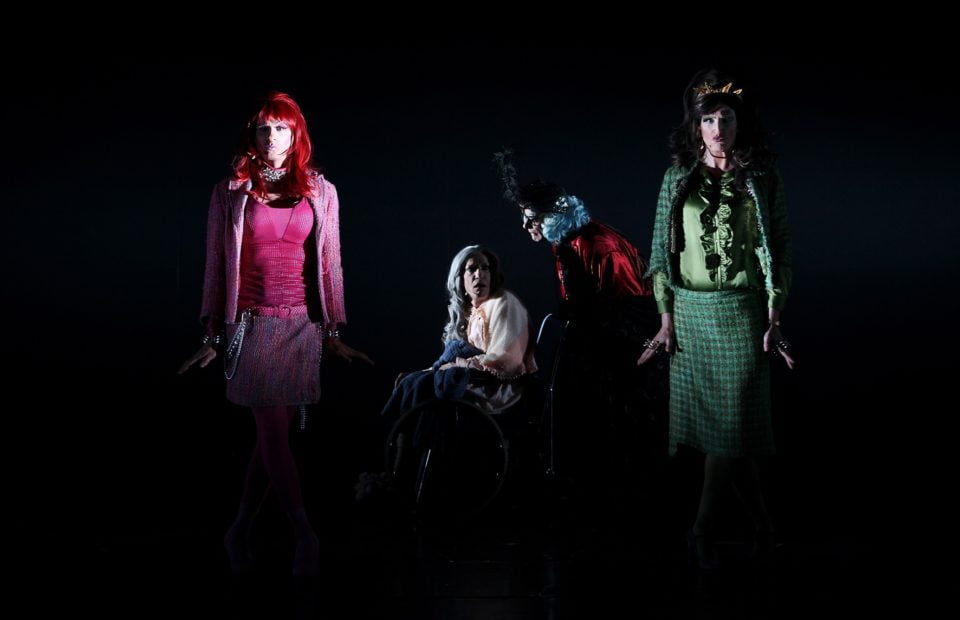 queen lear nina's drag queens
queen lear nina's drag queens

